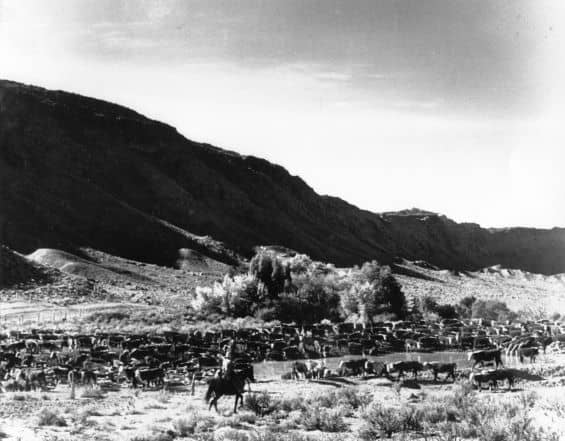Some information may be outdated.
Throughout Black History Month, the Moab Museum is digging into our collection to highlight stories of prominent Black individuals and groups throughout the history of the Moab Valley. This week, Charlie Glass takes center stage: a Black cowboy who worked at the Turner, Osborn, and Cunningham ranches. This cowboy was known for his grit and ingenuity, qualities admired during his time pushing cattle from Moab to Thompson Springs.
Glass was known for his fierce loyalty to ranch bosses, but his reputation was really made in 1921 during the Sheep Wars era, a time of conflict between sheepherders and cowboys. Glass found himself in an altercation with Basque sheepherder named Felix Jesui whose flock was encroaching on Oscar L. Turner’s property. Glass fatally shot Jesui and claimed self-defense. Glass’s bail was set at $10,000 (the equivalent of $157,000 today) which his boss, Turner, paid immediately and without question.

After a well-attended court hearing, Glass was acquitted and continued to work on the Turner Ranch for another 16 years. In 1937, Glass was playing poker with the cousins of the man he’d shot years before. After what local lore calls an amiable game, the group parted ways. But later that evening, Glass was found dead in the back of the men’s pick-up truck—reportedly, Glass’s neck was broken. The cousins claimed no foul play, but the truth of the night remains a mystery to this day.
Glass was buried in the Turner family plot, at a time when African-Americans were barred from being buried in the Fruita, Colorado, cemetery. Stop by the Moab Museum to view Pete Plastow’s portrait of Charlie Glass, mid altercation with Felix Jesui, who proved to be the ultimate end of the this local Black cowboy.
The Moab Museum website has a larger profile on Charlie Glass and a recording of “The Ballad of Charlie Glass,” performed by Sand Sheff in 2019 at KZMU Studios. The song was written and composed by William Leslie Clarke, courtesy of Three Rivers University Press.
The Moab Museum is dedicated to sharing stories of the natural and human history of the Moab area. This is part of a series highlighting photographs and stories of downtown Moab over time. To explore more of Moab’s stories and artifacts, find out about upcoming programs, and become a Member, visit www.moabmuseum.org.
Appreciate the coverage? Help keep local news alive.
Chip in to support the Moab Sun News.





